Svarog: God Of Cosmic Fire And Ruler Of The Sky In Pre-Christian Slavic Pantheon
Angela Sutherland - AncientPages.com - Svarog (Swarog ) is one of the most important deities in the Slavic pantheon. He is the Slavic god of celestial fire and patron of blacksmiths.
Svarog by Andrey Shishkin. Image credit: Andrey Shishkin - CC BY
He is the Supreme Heavenly God who always sleeps, and yet, he controls the flow of Life and Universal Order and governs the World of Yav, the 4-dimensional realm of physical beings. He entrusted this world to Perun, God of Heaven and Lightning.
One day - according to the beliefs - when Svarog wakes up, it will end the world. Svarog is a ruler of the sky, fire and is associated with the Sun.
Ancient Slavs worshiped Svarog as the god of the sky (heaven), and a guard of the cosmic fire represented by the Sun. The root of his name ("svar" means bright, clear) is related to the Sanskrit word "swar" (sun, glow, sky). A long-lasting and respectable habit of bowing and praying to the rising Sun was still widespread after Christianization was introduced in the Slavic countries.
In many Slavonic countries, rural folk still preserve deep respect for fire, which has always had a sacred character among those who addressed prayers to fire. For example, the old forbade the young to swear or shout when a fire was lit in the house.
Some old myths confirm that Svarog transmitted his creative sovereign power to his children, and a Byzantine chronicler, John Malala (490-565), summarized the cosmogony of the Slavic pagans in these terms:
Svarog, a ruler of the sky, fire, associated with the sun in Slavic beliefs. Image source
'After Svarog reigned his son, named Sun, who was also called Dazhbog. The Sun is the king and son of Svarog; he is named Dazhbog, for he was a mighty lord.' The other son of Svarog, Fire (or "ogon," which can be compared to the Sanskrit Agni), is mentioned in ancient work entitled 'Unknown Admirer of Christ.'
Svarog was also considered the guardian of the Slavic home fire and the sacrificial fire, associated with other gods such as Perun and Weles. As a divine blacksmith, Svarog throws lightning bolts and helps Perun to fight his antagonist, Weles.
According to Bruno of Querfurt (c. 974 – 1009 AD), a sainted missionary bishop and martyr, who was beheaded near the border of Kievan Rus and Lithuania while trying to spread Christianity in Eastern Europe, Svarog was widely worshiped in the region of the pre-Christian Slavs.
Special priests performed a divination in a hidden temple surrounded by sacred forests and cared for the sacred horse. They had a tradition of human sacrifices that usually took the form of beheading, which may suggest that sacrificial blood was apparently of importance. One of their victims was the Bishop of Mecklenburg on Jan. 10, who died in martyrdom. Another chronicler also confirmed the Svarog cult, Adam of Bremen, who lived in the second half of the 11th century.
Known under different names, Svarog has also been sometimes identified with Hephaestus, the god of fire and blacksmith, one of the 12 Olympian Gods, a mechanical engineer, a god of metallurgy, and a craftsman. However, to what extent the Greeks gods were thought to resemble their Slavic counterparts is uncertain.
Regarding the mighty god Svarog, identifying this mythological figure has always been a problem. His name is mentioned in many old writings but without references to his activities. To talk about Svarog means to rely on various tales and songs about him, but these sources cannot be verified.
Written by – A. Sutherland AncientPages.com Staff Writer
Updated on November 25, 2023
Copyright © AncientPages.com All rights reserved. This material may not be published, broadcast, rewritten or redistributed in whole or part without the express written permission of AncientPages.com
Expand for referencesReferences:
Christensen, Hammer Warburton, The Handbook of Religions in Ancient Europe
Curta F. Holt A., Great Events in Religion
Andrén, Jennbert, Raudvere, Old Norse religion in long-term perspectives
More From Ancient Pages
-
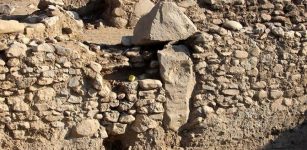 8,000-Year-Old T-Shaped, Four-Sided Structure With Pyramidion – Uncovered in Turkey
Archaeology | Nov 23, 2019
8,000-Year-Old T-Shaped, Four-Sided Structure With Pyramidion – Uncovered in Turkey
Archaeology | Nov 23, 2019 -
 LIDAR Will ‘Map’ The Ground Surface To Reveal New Picture Of Ancient Native American Culture
Archaeology | Aug 18, 2023
LIDAR Will ‘Map’ The Ground Surface To Reveal New Picture Of Ancient Native American Culture
Archaeology | Aug 18, 2023 -
 Magnificent Hochdorf Chieftain’s Grave – Resting Place Of The Celtic Tutankhamun
Featured Stories | Aug 19, 2019
Magnificent Hochdorf Chieftain’s Grave – Resting Place Of The Celtic Tutankhamun
Featured Stories | Aug 19, 2019 -
 An Ancient Woman’s DNA From A 20,000-Year-Old Pendant – Recovered By Researchers
Archaeology | May 4, 2023
An Ancient Woman’s DNA From A 20,000-Year-Old Pendant – Recovered By Researchers
Archaeology | May 4, 2023 -
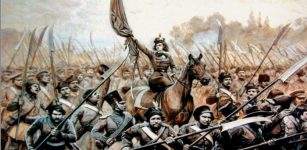 Emilia Plater: National Female Hero Of Polish And Lithuanian People
Featured Stories | Apr 21, 2017
Emilia Plater: National Female Hero Of Polish And Lithuanian People
Featured Stories | Apr 21, 2017 -
 Mysterious ‘Las Labradas’ Petroglyphs With Roots In The Pre-Columbian Times Of Mexico
Featured Stories | Oct 9, 2020
Mysterious ‘Las Labradas’ Petroglyphs With Roots In The Pre-Columbian Times Of Mexico
Featured Stories | Oct 9, 2020 -
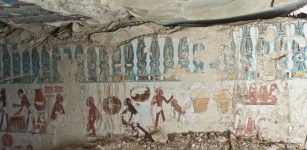 An Intact 4,000-Year-Old Burial Chamber Found In Aswan
Archaeology | Mar 28, 2017
An Intact 4,000-Year-Old Burial Chamber Found In Aswan
Archaeology | Mar 28, 2017 -
 First Known Depiction Of The Biblical Heroines Deborah And Jael Unearthed On 1,600-Year-Old Mosaics
Archaeology | Jul 6, 2022
First Known Depiction Of The Biblical Heroines Deborah And Jael Unearthed On 1,600-Year-Old Mosaics
Archaeology | Jul 6, 2022 -
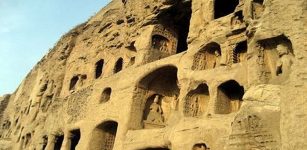 Yungang Grottoes: Marvellous Example Of Ancient Buddhist Rock-Cut Architecture
Featured Stories | Sep 15, 2015
Yungang Grottoes: Marvellous Example Of Ancient Buddhist Rock-Cut Architecture
Featured Stories | Sep 15, 2015 -
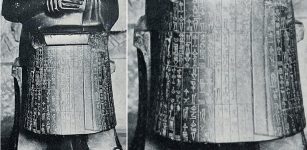 Statue Of Gudea: The King-Priest Of Sumerian City Of Lagash In Southeast Mesopotamia
Featured Stories | Aug 14, 2016
Statue Of Gudea: The King-Priest Of Sumerian City Of Lagash In Southeast Mesopotamia
Featured Stories | Aug 14, 2016 -
 Evidence Of The Moon-Eyed People – More Clues – Part 2
Civilizations | Dec 29, 2019
Evidence Of The Moon-Eyed People – More Clues – Part 2
Civilizations | Dec 29, 2019 -
 Mystery Of Marquis of Haihun: 2,000-Year-Old Royal Coffin Opened In China
Archaeology | Apr 20, 2016
Mystery Of Marquis of Haihun: 2,000-Year-Old Royal Coffin Opened In China
Archaeology | Apr 20, 2016 -
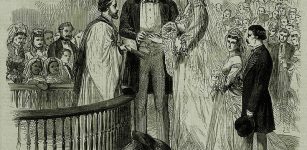 On This Day In History: One Of The Tallest Women In History – Died – On August 5, 1888
News | Aug 5, 2016
On This Day In History: One Of The Tallest Women In History – Died – On August 5, 1888
News | Aug 5, 2016 -
 Neanderthals: The Oldest Art In The World Wasn’t Made By Humans
Featured Stories | Jan 17, 2023
Neanderthals: The Oldest Art In The World Wasn’t Made By Humans
Featured Stories | Jan 17, 2023 -
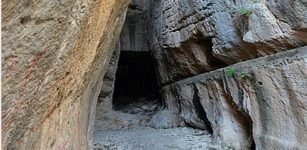 Spectacular Vespasianus Titus Tunnel – An Ancient Roman Engineering Marvel
Ancient Technology | Aug 30, 2018
Spectacular Vespasianus Titus Tunnel – An Ancient Roman Engineering Marvel
Ancient Technology | Aug 30, 2018 -
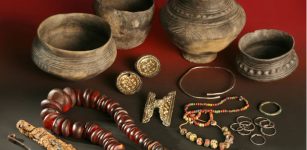 The Anglo-Saxon Migration: New Insights From Genetics
Archaeology | Sep 21, 2022
The Anglo-Saxon Migration: New Insights From Genetics
Archaeology | Sep 21, 2022 -
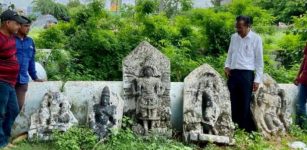 Rare Kakatiya Dynasty Sculptures Discovered Near A Temple In Telangana, India
Archaeology | Jul 24, 2021
Rare Kakatiya Dynasty Sculptures Discovered Near A Temple In Telangana, India
Archaeology | Jul 24, 2021 -
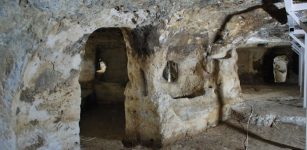 Huge, Ancient Underground City Filled With Artifacts Discovered In Mardin, Turkey
Archaeology | Apr 20, 2022
Huge, Ancient Underground City Filled With Artifacts Discovered In Mardin, Turkey
Archaeology | Apr 20, 2022 -
 Pukwudgie The Trickster: Grey-Faced Humanoid Creature In Native American Beliefs
Featured Stories | Apr 9, 2018
Pukwudgie The Trickster: Grey-Faced Humanoid Creature In Native American Beliefs
Featured Stories | Apr 9, 2018 -
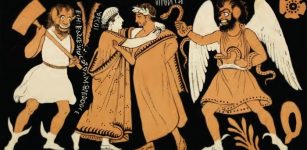 Tuchulcha: Wicked, Hideously Grotesque Etruscan Demon Identified With Both Male And Female Genders
Featured Stories | Jun 11, 2023
Tuchulcha: Wicked, Hideously Grotesque Etruscan Demon Identified With Both Male And Female Genders
Featured Stories | Jun 11, 2023


